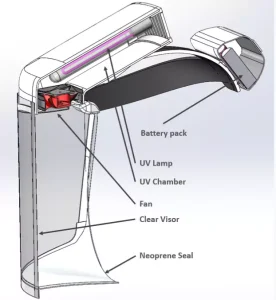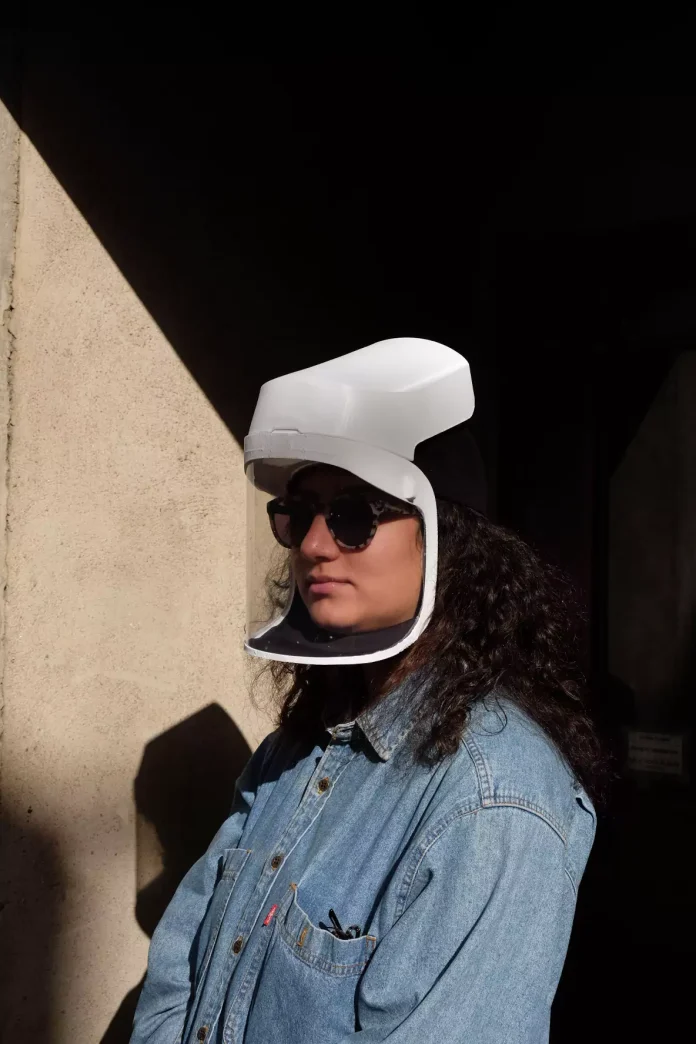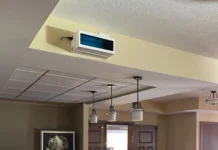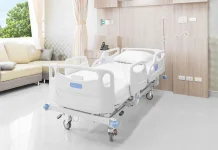Liz Stevens, writer, UV Solutions
UVisor is a full-face, UV-based positive air pressure filtration device designed to protect users against COVID-19. It was designed and developed by a 20+ member team from the US, India, Dubai, Pakistan, UK, Canada, Australia, Germany, Portugal and Poland, brought together by Helpful Engineering (Helpful), an international volunteer open source hardware and software nonprofit incubator.
Helpful, a registered 501(c)3 nonprofit organization operating a distributed platform and manned by a volunteer community dedicated to collaborative, open and sustainable innovation, was organized in March 2020 to support challenges presented by the worldwide pandemic response. It now counts almost 19,000 volunteers as members.
From concept to reality
The idea for UVisor was conceived at the beginning of the COVID-19 pandemic by Ritesh Gupta, a Houston, Texas-based entrepreneur who became the program manager for the project. “I thought that the risk of contracting COVID was very high,” said Gupta, “and that a mask might not be the best protection. I envisioned some kind of helmet which would be more protective for the eyes, nose and mouth, which are the areas primarily at risk for contracting COVID.”
Gupta posted the idea on an online forum and then onto the Helpful platform. The Helpful community, which includes doctors, engineers, communications specialists and others, responded to Gupta’s idea and helped it evolve. Chris Jones, a design engineer in London, England, loved the idea and joined the project, eventually becoming its technical lead.
Gupta’s impetus for designing and building the UVisor stemmed from the deficiencies he saw among the existing PPE devices. Conventional powered air pressure respirators are expensive, bulky contraptions that are not comfortable to wear and require a supply of single-use filters. Masks do not provide full-face protection, are often worn incorrectly, are uncomfortable to wear for long periods of time and are intended as single use products. And N95 masks require a fit test and are often worn incorrectly, thus defeating their purpose.
“Between Chris, myself and a lot of other folks on Helpful,” said Gupta, “the idea snowballed into what it is today. Other groups pitched in as well. We had funding from the US Department of Energy, which allowed Sandia National Laboratories to eventually do a free test, which proved that our prototype device worked.”
Ansys, a Canonsburg, Pennsylvania, provider of engineering simulation software, contributed by helping with the software and simulations. Tokyo, Japan-headquartered Stanley Electric Co. and Porex Filtration Group, Fairburn, Georgia, contributed expertise for choosing the best UV lamp and filtration components for the device. Atlanta, Georgia’s Emory University helped by evaluating the product’s usability. People from Lawrence Berkeley National Laboratory and at CERN (the European Organization for Nuclear Research) offered suggestions and feedback. “It really became a large community-industry-government effort, and that collaboration is what allowed us to build the UVisor,” Gupta explained.
Jones described the timeline for the project. “With the help of Ansys, we had a virtual prototype done in about three months, which is when we realized that the idea could work. At about month four or five, we built a test prototype with the electronics and the working parts in place, and we sent that off to Sandia National Labs to be tested. So, within six months, we had a tested engineering prototype.” After that, the group fine-tuned the ergonomics of the UVisor.
Design and construction
“The biggest challenge during the design stage,” said Jones, “was getting something that would give us the UV dose that we required but that would fit into a reasonably-sized device that someone would want to wear.” The group chose off-the-shelf components – a quiet fan unit and compact battery cells. “The main design work was on the UV chamber,” Jones said, “which is the main bit doing the sterilization. We had a lot of back-and-forth among our group to design a workable chamber and find components that would work but also be ergonomic.”
For the UVisor, Gupta and Jones also chose an off-the-shelf UV lamp. “Stanley Electric makes UV lamps in Japan, and they had a perfect range of lamps that worked for us,” said Jones. “These are high-quality, stock lamps; we wanted to stick with something that could be replaced with another maker’s lamp, especially for the benefit of UVisor users in other countries.”
The lamp is a standard cold cathode UV lamp with a quartz shield to protect the user from any harm or injury in the case of breakage. “Early on,” Jones said, “there were some discussions and even arguments about using cold cathode or mercury-based lamps vs. UV-C LEDs, which did not output the required UV intensity and were expensive.” The group chose a reasonably priced UV lamp that provided the required 253.4 nm wavelength delivered at a dose of about 9 mJ/cm2. The UV lamp’s life is 50,000 hours, and the UVisor’s overall life is 20,000 hours. Initial Sandia National Laboratory testing suggested that 99.9% of MS2 surrogate virus was inactivated, and additional testing is ongoing.
“The main thing that eventually got the whole thing to work,” said Jones, “was the UV-C reflector internal in the UV-C chamber. Porex Group was able to supply a very high reflectance material to use in the chamber. That was the critical part that took the design from not working at all to being able to produce the dose that we needed.”
By adding the reflector, the UV dose was increased by about 30 times. “It made the difference between something that would last all day and could be done with one or two lamps vs. something that would have needed a giant battery and lots of lamps, and that would have been a lot more expensive,” he continued.
Collaboration yields filterless protection
The resulting product is a reusable positive air pressure helmet and detachable visor with a small, quiet fan, a battery cell and a contained UV light, which circulates sterilized air to its wearer. It is the first filterless protection of its type, providing full-face, comfortable all-day UV disinfection protection from COVID-19 and variants. It has no external hoses, power supply or filter units; everything is built into the helmet itself. The device weight 2.5 lbs., including batteries.
 The UVisor inactivates pathogens in inhaled air. It is not currently designed to inactivate pathogens in exhaled air but could be modified to do this. Airflow is 60 liters per minute, and fan noise is 12 dBa. Continuous air flow prevents heat buildup and fogging of the visor. A fine copper mesh filters large particulate matter. Battery life is 4 to 8 hours, and the UVisor also can be connected to power via USB cable.
The UVisor inactivates pathogens in inhaled air. It is not currently designed to inactivate pathogens in exhaled air but could be modified to do this. Airflow is 60 liters per minute, and fan noise is 12 dBa. Continuous air flow prevents heat buildup and fogging of the visor. A fine copper mesh filters large particulate matter. Battery life is 4 to 8 hours, and the UVisor also can be connected to power via USB cable.
The UVisor’s detachable visor accommodates glasses and offers full-face visibility, a feature especially useful in healthcare where facial expression is so important for communication. The makers view it as suitable for individuals and particularly useful in schools, nursing homes, the travel industry, retail, warehouses, food processing plants, law enforcement and armed forces. These settings often have limited teleworking or social distancing options for personnel, while posing high virus health risks.
“What we ended up doing with UVisor,” said Gupta, “was almost to create a new category of product – something with benefits between a mask and a powered respirator. We are keen to bring the idea to the market; this is open source so it is available for anyone to build out.” Gupta invites inquiries from companies that may have a portfolio of related healthcare/PPE devices, pointing to the UVisor’s best features: “The UVisor is low cost, allows full face visibility, is easy to wear, works for an entire day on one battery charge, and generates no disposables.”
From a production standpoint, Gupta notes that the product comprises mostly off-the-shelf components. “The main components to be produced are the electronics board and the plastic parts – the UV-fan-battery chamber and the visor elements,” he said. “The UV lamp is available from Stanley Electric. The reflector is available from Porex and the off-the-shelf fans can be sourced quite easily.”
“This design can be repurposed for other needs,” Gupta explained. “For example, exhaled air purification or vent exhaust purification in hospitals and other institutions.” Gupta and the team consulted with UV technology experts to ensure that UVisor features effective UV pathogen elimination delivered by robust technology.
The UVisor design is open source and not-for-profit, so that more people can take the blueprint and manufacture it at scale to help people in need. Estimated production cost is less than $90/unit at 10,000 scale.
For more technical information on the device, which earned a 2021 IUVA RadLaunch award, see Chris Jones’ 2021 IUVA conference presentation, at https://www.youtube.com/watch?v=pq7TThwAndo. For the hardware design, visit https://wikifactory.com/+ucpd/uvisor. For the electronics design files, visit GitHub – KeepThisTicket/UCPD_electronics.
For more information or to contact the UVisor team, visit uvisor.org.






